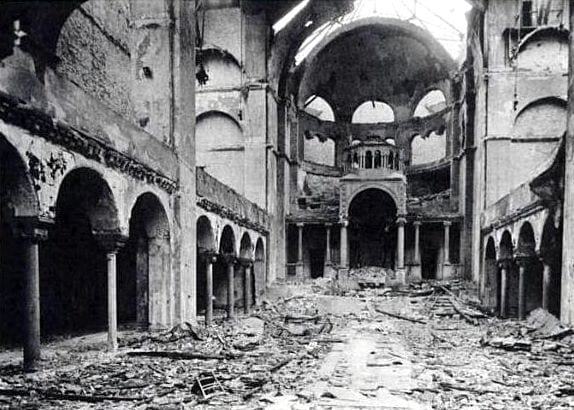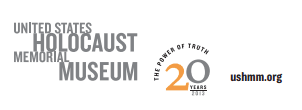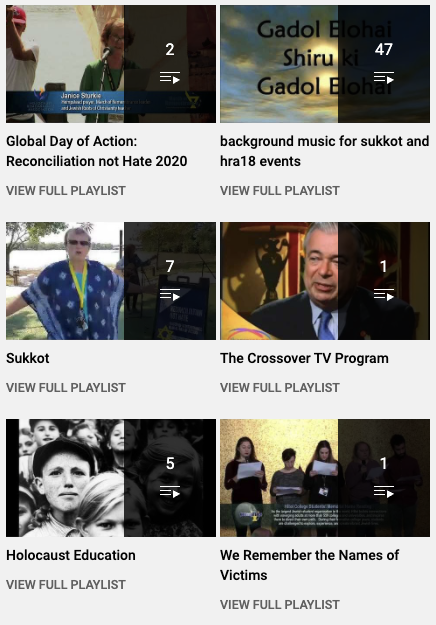The United States Holocaust Museum Announces the National Days of Remembrance for April 7-14, 2013.
Seventy-five years ago, momentous changes were occurring in Central Europe. Few understood the historic significance of the times, and fewer still saw these events as precursors to what would become one of humanity’s darkest hours.
By 1938 the Nazis had been in power for five years, during which they systematically removed Jews from public life in Germany, stripping them of their rights as citizens and severely limiting their employment opportunities. In that pivotal year, the year before Germany invaded Poland and ignited World War II, the treatment of Jews took a dramatic turn for the worse. With the German Reich’s annexation of Austria in March and its incorporation of the Czech border areas—which the nations of the world failed to prevent at the Munich conference in September—an additional 200,000 Jews fell under Nazi rule and became targets of intense persecution, humiliation, and violence.
Many were desperate to flee, but no country would take them.
Responding to mounting pressure to resolve the worsening refugee crisis, President Franklin Roosevelt proposed an international conference at Evian-les-Bains, France, in July 1938. The nations invited were reassured that “no country will be expected . . . to receive a greater number of immigrants than is permitted by existing legislation.” As a result, of the 32 nations represented, only one—the Dominican Republic—agreed to accept a large number of additional refugees. Then on November 9–10, 1938, came Kristallnacht, a wave of violence unleashed by the Nazis that resulted in the death of at least 91 Jews, the destruction of hundreds of synagogues and many more Jewish owned businesses, and the arrest of some 30,000 Jewish men, most of whom were transferred from local prisons to the Dachau, Buchenwald, and Sachsenhausen concentration camps.
The Jews of Central Europe struggled to maintain their communities and their dignity, but the impact of these events was devastating. In addition to the loss of life and the
destruction of property, Kristallnacht ripped apart many families, as parents sought desperately to send their children to safety even if they could not secure exit visas for themselves as well. Those families fortunate enough to escape together had to build new lives far from home, in places like the United States, South America, the Caribbean, or China.
Although newspapers around the world reported on the escalating violence, very few nations, individuals, or groups chose to help. Those who did made a difference. Rufus Jones and Clarence Pickett, leaders of the American Friends Service Committee, a US-based Quaker aid society, were motivated to act and became ardent advocates for expanding refugee assistance for children. They worked closely with welfare agencies to help Jewish refugees in France, Spain, and Portugal.
In Britain, Lola Hahn Warburg was one of several prominent British and German Jews who convinced the British government to allow Jewish children under 17 from Nazi Germany to immigrate to the United Kingdom through a special Kindertransport program. The first group landed in Harwich on December 2, 1938, bringing some
200 children from a Jewish orphanage in Berlin that Nazi radicals had destroyed on Kristallnacht. Before it was ultimately halted by the outbreak of World War II, the rescue operation brought some 10,000 children, three-quarters of whom were Jewish, to relative safety in Great Britain.
Looking back at the events of 1938, the signs of impending war and the Holocaust—territorial expansion, disregard for international law, persecution of people based on their identity—are undoubtedly clearer today than they were then.
Nonetheless, opportunities for international intervention, such as at the Evian Conference, existed and could have saved many lives. Why did so many countries and individuals fail to respond to the warning signs? And what can we learn from the few who chose to act, despite widespread indifference?
As we reflect on these questions, we remember all whose lives were lost or forever altered by the Holocaust. And we are challenged to think about what might motivate us to respond to warning signs of genocide today. History teaches us that genocide can be prevented if enough people care enough to act. Our choices in response to hatred truly do matter, and together we can help fulfill the promise of “Never Again.”


